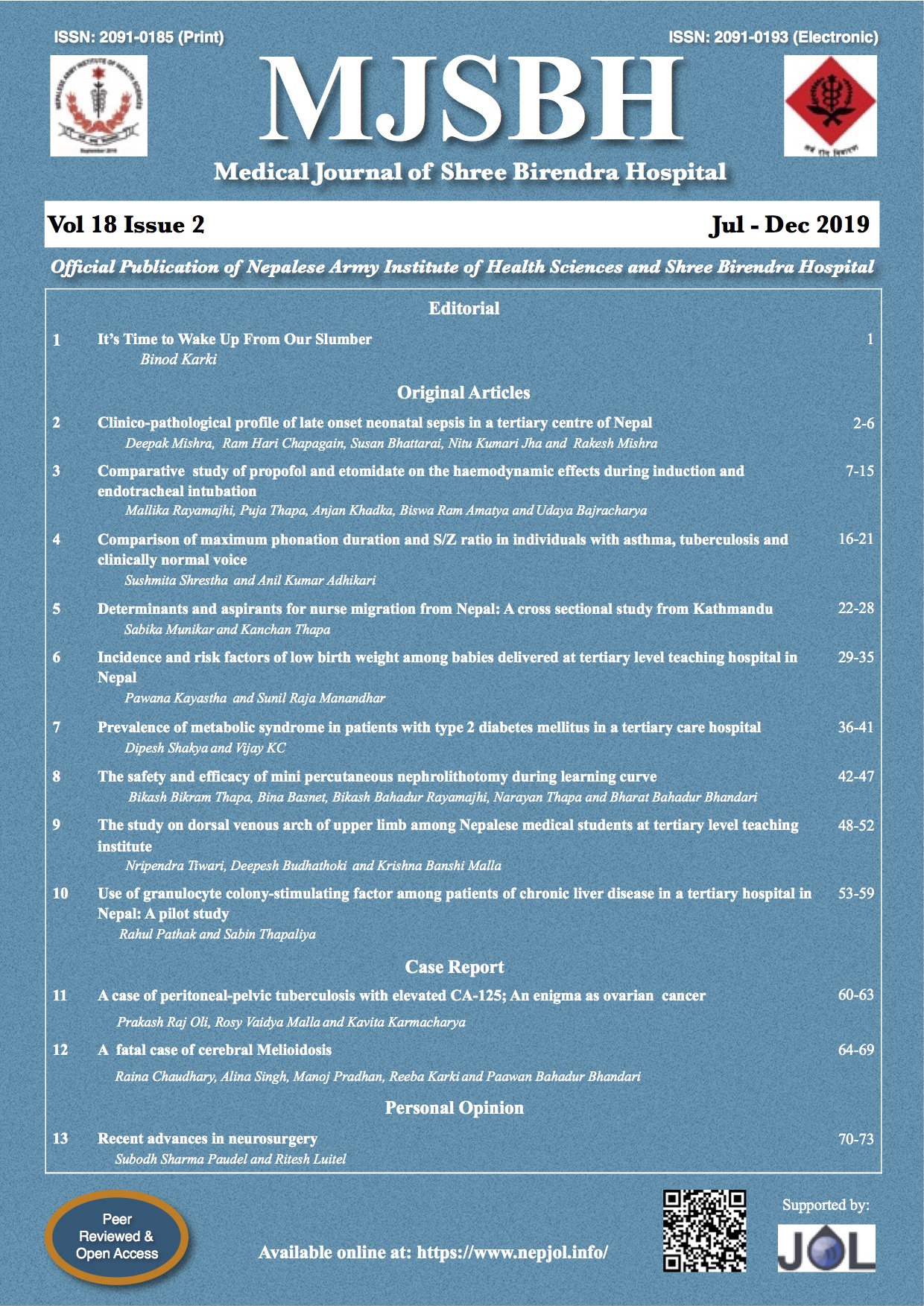Comparative Study of Propofol and Etomidate on the Haemodynamic Effects During Induction and Endotracheal Intubation
DOI:
https://doi.org/10.3126/mjsbh.v18i2.20907Keywords:
Propofol, hemodynamics, induction, intubation, etomidateAbstract
Introduction: While most intravenous induction agents decrease arterial blood pressure, laryngoscopy and endotracheal intubation increase the heart rate and blood pressure. Propofol causes a decrease in systemic blood pressure whereas etomidate has minimal effects on the cardiovascular system. This study aims to evaluate and compare the hemodynamic effects of propofol and etomidate during induction and endotracheal intubation.
Methods: 62 ASA I and II patients, 20-60 years of age, scheduled for elective surgery were enrolled in this prospective, randomised and double blind comparative study. Group A received inj. Propofol (2 mg/kg) and group B received inj. Etomidate (0.3 mg/kg), as induction agents. Heart rate, systolic blood pressure, diastolic blood pressure and mean arterial blood pressure were recorded after induction and after intubation at one, three, five and ten minutes and intergroup comparisons were made.
Results: After induction the decrease in systolic, diastolic and the mean arterial pressures were more in group A compared to group B (p = 0.003, 0.004 and 0.002). After 1 minute of intubation all haemodynamic parameters increased from the baseline with no significant differences between the two groups (p >0.05). At three minutes the decrease in heart rate, diastolic blood pressure and mean arterial pressure was more in group A than group B with p values of 0.001, 0.002 and 0.05, however systolic blood pressures showed no significant difference (p = 0.144). The decrease in blood pressures showed significant difference between the two groups (p <0.05) at five and ten minutes but the decrease in heart rate remained significant only at five minutes of intubation (p = 0.001).
Conclusions: Propofol and etomidate are both effective in preventing the haemodynamic changes due to induction and endotracheal intubation, with etomidate providing more haemodynamic stability.
Downloads
Downloads
Published
How to Cite
Issue
Section
License
This license enables reusers to distribute, remix, adapt, and build upon the material in any medium or format for noncommercial purposes only, and only so long as attribution is given to the creator.




